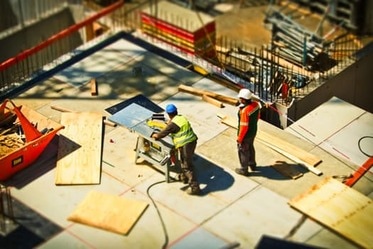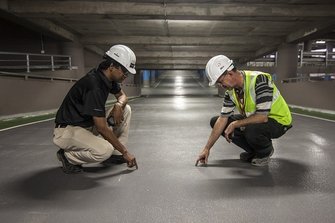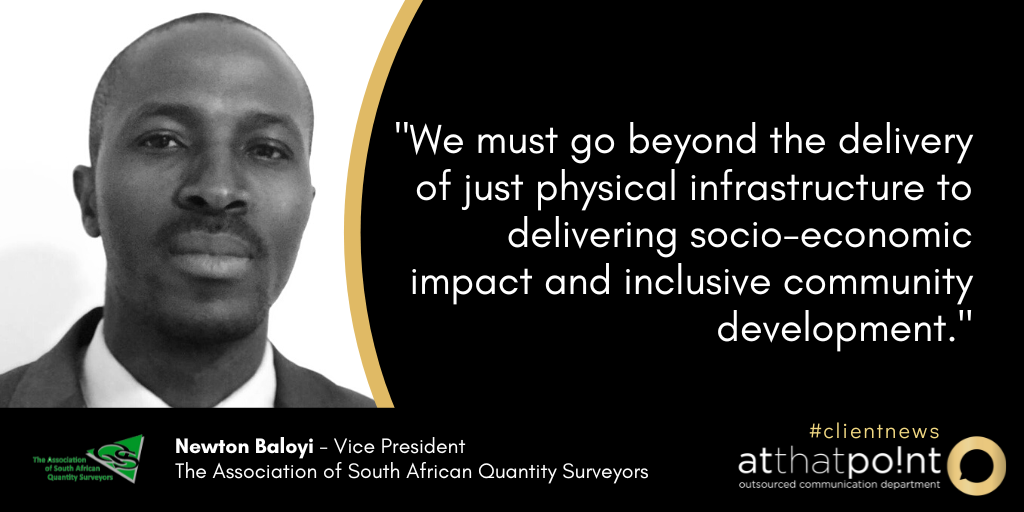|
“Infrastructure development is a catalyst for economic development but is often accompanied by strikes from communities, business forums and criminal activities by construction mafias. At the centre of this instability is the demand for meaningful participation by communities in the labour and business opportunities inherent in infrastructure projects,” said Newton Baloyi, Vice President of the Association of South African Quantity Surveyors (ASAQS) at the recent Western Cape Property Development Forum Conference held in Cape Town.
While the ASAQS welcomes the announcement of the establishment of the Broad-Based Black Economic Empowerment Advisory Council by President Cyril Ramaphosa, it however notes with concern that the panel seems not to have any representation from the built environment professions or construction sector procurement, despite the critical nature of infrastructure to South Africa’s economic recovery and development, and the high levels of instability and community disruptions on infrastructure projects. B-BBEE in the construction sector has specific unique challenges that need urgent attention. “The missing link is that our infrastructure procurement regulatory framework does not go far enough in addressing the socio-economic concerns of communities,” Baloyi said. “We need other mechanisms for measuring the performance of infrastructure projects. We must go beyond the delivery of just physical infrastructure to delivering socio-economic impact and inclusive community development.” Baloyi told the conference and supported his statement by sharing the findings of a pilot project he conducted. The pilot was based on a project set aside for the community. The findings showed that the benefit of the project to the community could be increased from 6 cents to 40 cents per Rand spent on the project and the payback period reduced from 17 years to 2.5 years. This meant that the benefit to the community could exceed the client’s procurement spent in just over 2.5 years. In addition, the social return on investment (SROI) would be improved from a negative 94% to a positive 60%. According to Baloyi, there are four interventions required to achieve these kinds of results for the construction sector. Firstly, a mindset shift to integrate impact measurement into construction projects. Secondly, integrate impact delivery into infrastructure procurement practices and legislation. Thirdly, establishing sector community capacity development programmes that enable meaningful community participation in projects rather than the current project-by-project approach. Lastly, proactive establishment of community buy-in based on the shared impact objectives of projects. “These four interventions must be coordinated and integrated into projects; having one without the other does not work,” Baloyi warned. The failure to integrate the four interventions is where B-BBEE fails communities and the construction sector. “Communities expect participation with or without capacity, otherwise there will be strikes,” said Baloyi “Yet, there are no sustainable capacity building programmes for community businesses and skills. The financial support needed by local businesses can hardly be accessed within the life of a project.” “These are systemic challenges that cannot be solved by social facilitators on construction projects, nor by a developer or contractor on a project-by-project basis. These challenges play a significant role in project delays, poor service delivery, budget overruns and delayed economic development. We hope that the B-BBEE advisory council will go a long way in addressing the fragmented approach to B-BBEE and foster the integration proposed herein.” “Given the high levels of poverty, inequality and especially youth unemployment and the negative economic outlook of South Africa, urgent interventions are required to avert intensified and violent strikes in the construction sector. Low hanging fruits include the establishment of an initiative led by the construction sector that integrates all stakeholders in the built environment to establish a voluntary pilot that can inspire hope in communities and reassure them that their concerns are being addressed.” “Rather than theorising about transformation, let’s do it in real-time and with real results as the built environment,” Baloyi told the conference as he called on developers, built environment professionals and contractors to amalgamate their skills development, supplier and enterprise development and SED/CSI resources to establish such a pilot linked to their portfolio of projects. He suggested that it is time for the built environment professionals to lead the transformation agenda in the construction sector. “We are the experts in infrastructure procurement and strategies and not government”. ENDS MEDIA CONTACT: Stephné du Toit, [email protected], 084 587 9933, www.atthatpoint.co.za For more information on ASAQS please visit: Website: www.asaqs.co.za LinkedIn: linkedin.com/company/asaqs Twitter: @the_ASAQS Facebook: facebook.com/asaqsza
0 Comments
Quantity Surveyors are aiming to play a crucial role in getting “frozen” infrastructure development projects back on track. “Municipal managers and classically trained accountants are currently expected to deliver complex projects,” says Larry Feinberg, Executive Director of the Association of South African Quantity Surveyors (ASAQS). “Not only is this expectation unfair on them without them having received the proper training; it’s also part of the reason why some large infrastructure development projects have been suspended or have ground to a halt.”
According to Feinberg the ASAQS has been in talks with senior government officials and other industry bodies to create solutions that can assist with training and professional support to those charged with delivering these projects. “Training on the use of standards documentation is but one of the areas where Professional Quantity Surveyors can be of assistance,” explains Feinberg. “Deploying Professional Quantity Surveyors to upper echelons in government is one of the mechanisms that can be used to good effect to educate officials on good governance in procurement, bidding and tendering processes, and the complex process of managing the construction process from a cost control point of view.” The “Send Me” call made by President Ramaphosa during his State of the Nation address earlier this year has resonated with many and sparked collaborative action across many economic sectors. Feinberg hopes that this call can be used as a basis for professionals in the built environment to bridge focus areas that traditionally operate in and create solutions that serve the best interest of the public and the fiscus. “Our interactions on several discussion platforms are focused on how to bridge the gap between what Thuma Mina means for the public sector and how our members can assist,” says Feinberg. The ASAQS has consistently promoted the role of a Quantity Surveyors as one that plays a significant part in curbing instances of fraud and wasteful expenditure. “The time for behaviours that – intentionally or unintentionally – resist collaboration is over,” says Feinberg. “It is now time for all of us to share knowledge and expertise, so we can collectively respond to the President’s call.”  A “cost per square metre rate” is a method of expressing building cost that should be used with extreme caution by both clients and contractors involved in the cost comparison and cost planning process, says former Association of South African Quantity Surveyor President, Bert van den Heever. There are a number of design variables which can adversely influence square metre rates, thereby giving a false impression of the cost of a building project and this can lead to serious problems for both clients and contractors. “You will not compare a Porsche to a Volkswagen on the basis of their cost per square metre, so why try and do it with buildings?” asks van den Heever “As a client, a generic cost per square metre rate doesn’t give you the detailed information that you need regarding finishes, fittings, services, site development costs, etc. There is a wide range of other building elements that also have an impact on costs and therefor quantity surveyors normally do elemental estimates to derive the square meter cost of a project. “An elemental estimate provides cost build-ups for elements such as the substructure, ground floor, external façade, roofs, etc. and enables the quantity surveyor to advise the client on aspects of cost at a very early stage” says van den Heever. “It is important to note that less than 40% of a building’s cost is the structure itself, so the project is far from completed once the foundation has been laid, the walls have been built and the roof constructed. Smaller contractors who tender on a cost per square metre basis puts both themselves and their clients at risk.” says van den Heever. We have, on numerous occasions, been approached by clients or their attorneys when building contracts turn sour, only to find that because there was no detailed breakdown of the costs, the project had run into trouble or come to a standstill due to overpayments on the structural elements,” says van den Heever. Why and how design variables play a role A square metre rate is calculated by dividing the net cost of the building (excluding site works, cost of land, etc.) by the gross square metres of the building or Gross Floor Area (GFA). Typically GFA can be defined as the total floor area inside the building envelope, including the external walls, and excluding the roof. “As a general rule, the simpler the shape of a building, the lower the unit cost will be, but even this can be misleading as a square building of 10x10m and a rectangular building of 25x4m have the same floor area but the rectangular building requires 45% more walling to enclose it. More intricate designs generally result in higher perimeter/floor area ratios – increasing excavation costs, drainage costs and a number of other construction related costs significantly,” explains van den Heever. Hiring a Quantity Surveyor early in the project, preferably not later than when sketch plans are being prepared by the architect, will put a client in the best possible position to achieve the look, finishes and final touches they want and still remain within their budget. “Both the client and the architect need to be fully aware of any additional costs or savings that may arise from shape, size, circulation space and a number of other variables in the design of a building. The services of a registered Quantity Surveyor can help them adopt an approach that will assist the client in achieving a suitable balance between cost, aesthetics and functional aspects,” concludes van den Heever. ENDS MEDIA CONTACT: Carla Coetzee, 072 112 8347, [email protected], www.atthatpoint.co.za For more information on ASAQS please visit: Website: http://www.asaqs.co.za/ Facebook: The Association of South African Quantity Surveyors  There are some very good reasons why alternative building methods aren’t that feasible in the South African market. They can potentially be more expensive than traditional methods, don’t inspire customer trust and may not be as aesthetically pleasing. Alternative building methods also come with a hidden price tag that can impact on quality and finish. “There is a resistance to alternative methods in South Africa,” says Bert van den Heever, Immediate Past President of the Association of South African Quantity Surveyors (ASAQS). “Most of the alternative construction methods have concentrated on providing alternative walling and roofing systems, the two largest elements you see when looking at a building. “Trying to save money on walling using alternative building methods is sometimes a futile exercise as walling normally comes in at less than 10% of the total project cost,” van den Heever said. The use of clad walling systems has resulted in a negative perception in the lower end of the housing market called the Knock Factor Effect. People knock the walls, if they sound hollow they instantly perceive the build as not solid or secure. They want to solidity of brick – the traditional materials - over the perceived flimsiness of panels – the alternative ones.” In addition to the impact of perception, alternative building materials are not always readily available in South Africa and often have to be imported. This pins on a price tag that few can afford. As a result, there is some growth within the high-end market, but limited uptake in the lower end of the market. “The value of using alternative building methods is hard to quantify,” says van den Heever. “We can show a client how using method B compared to method A will affect costs and often the answer isn’t in favour of alternative solutions. What we do is look at is every aspect of the building and assess exactly what the costs are going to be from the start. We bring clarity – you may not like the answer, but you will know exactly where you stand.” Whether adopting alternative or investing in traditional, the method and materials of the build are not the questions that the customer should be asking. Instead, they should be looking at the impact of cost right from the planning stage of the project to ensure that every part of the project, from the meters to the materials, are assessed and evaluated. “People often complain that there are hidden costs in their build; that the project price is stacking up in spite of a clear quote at the start,” adds van den Heever. “That’s the pitfall that the quantity surveyor helps you avoid. We can put figures down that show you what you can get, from what you want, in the budget you have. You want to invest in alternative building methods? With that kind of clarity into spend and capability, you can, and you can do it without unpleasant surprises.” ENDS MEDIA CONTACT: Cathlen Fourie, 082 222 9198, [email protected], www.atthatpoint.co.za For more information on ASAQS please visit: Website: http://www.asaqs.co.za/ Facebook: The Association of South African Quantity Surveyors by |
Archives
July 2024
Categories
All
|




 RSS Feed
RSS Feed